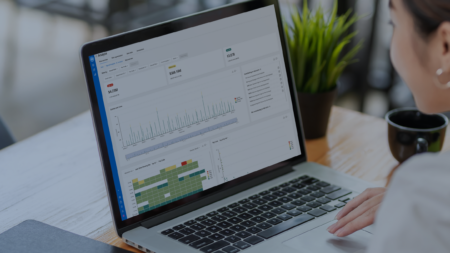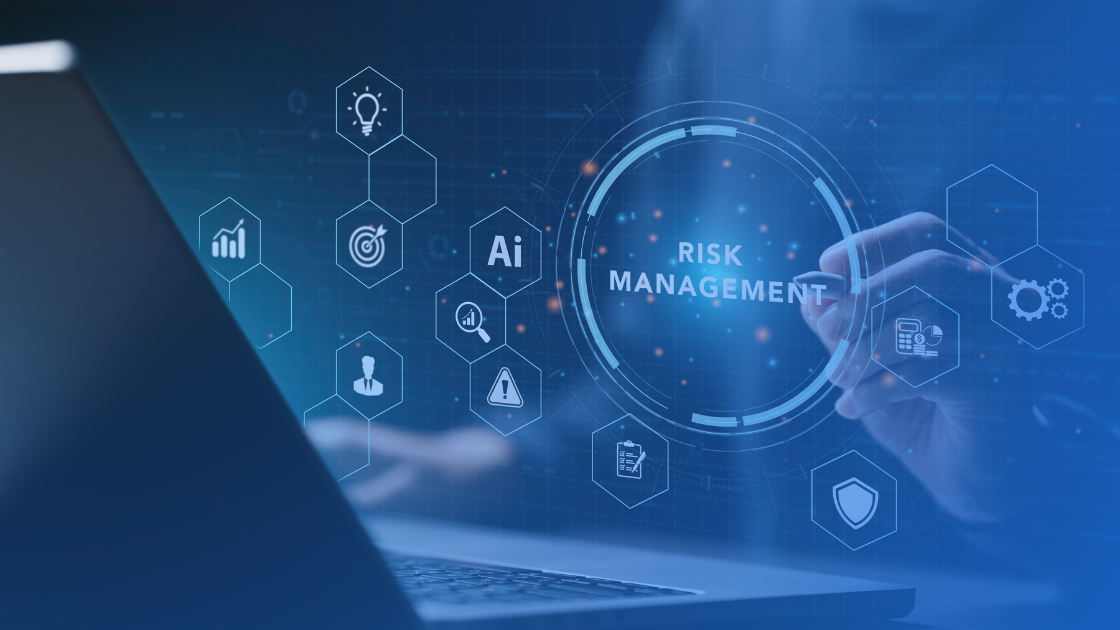If recent years have taught us anything, it’s that uncertainty is the only constant, and enterprise risk management should be more than an afterthought. Plus, the increasing regulatory demands, vast amounts of data, and the pressure to ensure compliance, all put additional pressure on finance teams.
Enterprise risk management tools can assist companies that want to manage operational risk, a term that encompasses concerns ranging from ensuring employee safety and securing sensitive data to meeting statutory regulations and stopping financial fraud.
Financial Risks in Today’s Business Environment
Financial risk has always been a significant problem in the business environment, but recently it has become more prevalent.
In recent years, CFOs have taken on increasingly complex roles that extend beyond traditional financial management. According to a Deloitte study, more than half of CFOs report expanded responsibilities in areas such as ESG (66%), strategy and business development (66%), risk management (63%), and company-wide data governance (53%). These growing demands highlight the need for tools that can simplify and stabilize their expanding workloads. Enterprise risk management tools like MindBridge provide CFOs with the AI-driven insights necessary to navigate resource limitations, analyze massive datasets, and holistically manage financial and operational risks across their organizations.
One thing is certain: finance leaders, including CFOs, financial controllers, and directors of internal audit, face numerous hurdles when managing financial risks and recent studies prove it. On top of issues like pandemics or recessions that can have a strong and severe impact on any business, other key issues impacting enterprises include:
- Increasing regulatory pressures. As regulatory requirements grow in complexity, companies must ensure compliance or risk facing severe fines and reputational damage.
- Maintaining accurate financial reporting. Accuracy in reporting is crucial, yet many organizations still rely on outdated manual processes that are prone to errors.
- Managing vast data across departments. Handling and analyzing large volumes of data can be overwhelming without the right tools, especially when data is siloed within various departments.
Enterprise risk management tools offer promising solutions to these challenges, using AI and automation to streamline risk identification, reporting, and analysis processes. These tools allow finance leaders to mitigate risks before they escalate into significant issues and to focus on more strategic financial decisions.
What is enterprise risk management, and why is it important?
Enterprise risk management (ERM) is a structured approach to helping organizations identify, assess, manage, and monitor the various risks they face.
A solid ERM strategy can help companies anticipate potential threats and address these risks before they negatively impact operations or financial stability. For CFOs, financial controllers, and directors of internal audit, ERM is essential not only for safeguarding the organization’s assets but also for fostering a proactive risk culture.
With effective ERM tools, finance teams can reduce their reliance on reactive measures, focusing instead on strategic planning and informed decision-making. The right ERM solution can provide both immediate protection against risks and long-term advantages for sustainable growth.
Benefits and Risks of Enterprise Risk Management Tools
ERM tools can boost your risk management efforts, but if you’re not careful, they also come with certain risks. Let’s take a look at their pros and cons.
Benefits of Using Enterprise Risk Management Tools
Improved Risk Identification
ERM tools leverage advanced data analysis techniques, helping organizations detect potential risks early. This allows finance leaders to take preemptive action, avoiding costly repercussions.
Increased Efficiency
Automating repetitive tasks, such as data entry and risk scoring, frees up valuable time for finance teams to concentrate on in-depth risk analysis and mitigation planning.
Real-time Insights and Data Visualization
ERM tools provide real-time data insights, helping organizations identify trends and patterns in their financial data. As a result, finance leaders can make data-informed decisions swiftly, minimizing potential disruptions.
Maintain Compliance with Regulatory Requirements
ERM tools offer automated compliance tracking, reporting, and audit trails, reducing the chances of compliance breaches and enhancing stakeholder trust.
Interdepartmental Risk Management
With automated compliance tracking, reporting, and audit trails, ERM tools reduce the risk of compliance breaches and strengthen stakeholder confidence.
Improved Operational Performance
A proactive approach to risk management can reduce operational disruptions, improve resource allocation, and drive overall efficiency.
Risks of Using Enterprise Risk Management Tools
Cultural Resistance
Implementing ERM tools often causes a shift in established workflows, which can lead to pushback from employees accustomed to traditional processes.
Data Quality Issues
Incomplete or outdated information can hinder accurate risk assessment, emphasizing the need for high-quality, up-to-date data within ERM systems.
Integration Challenges
Integrating new ERM tools with legacy systems can be complex, particularly in organizations with siloed data or incompatible technologies.
Cost Implications
While ERM tools can have long-term benefits, the initial cost of software acquisition, training, and maintenance may be significant.
Over-Reliance on Technology
An over-dependence on ERM tools for decision-making could lead organizations to overlook qualitative factors or human judgment, which are equally critical in assessing risk.
Choosing the Right Enterprise Risk Management Tool For Your Company
Selecting the best ERM tool involves careful consideration of specific criteria that align with your organization’s needs. Finance leaders should evaluate tools based on factors such as scalability, ease of integration, data security, user-friendliness, and customer support.
To minimize risks associated with adopting a new ERM tool, and ensure the best results for your company, you should focus on several essential criteria, as highlighted below.
| Criteria | Description | Importance |
| Scalability | The tool’s capacity to expand alongside organizational growth. | Ensures the tool can grow with your organization’s needs. |
| Integration capabilities | Ability to integrate smoothly with current systems and data sources. | Facilitates smooth integration with existing systems and data sources. |
| Data security | Protects sensitive and financial information from unauthorized access. | Safeguards sensitive financial information. |
| User-friendly interface | Simple, intuitive design for easy adoption across departments. | Enhances adoption across departments and reduces training time. |
| Customer support | Access to ongoing assistance and resources for effective usage. | Provides ongoing assistance and resources for successful implementation. |
| Proactive risk management features | Advanced analytics and predictive modeling to anticipate risks before they materialize. | Enhances resilience by helping organizations address potential issues proactively. |
| Comprehensive reporting and analytics | Robust reporting capabilities that provide actionable insights into risk exposure and trends. | Supports informed decision-making by offering clarity on management effectiveness. |
Mindbridge: No.1 Enterprise Risk Management Tool
MindBridge is widely recognized as an industry leader in enterprise risk management tools. Users across various industries appreciate it for its effectiveness, ease of use, and advanced capabilities. Here’s how MindBridge stands out as a premier ERM solution.
Comprehensive Transaction Monitoring
MindBridge’s platform offers real-time monitoring of every transaction, reducing the risk of undetected fraud. With a detailed analysis of each transaction, MindBridge can quickly identify discrepancies and provide finance leaders with the insights needed to address potential issues promptly.
For instance, users report they saw a 25% increase in the detection of financial anomalies once they started using MindBridge and a 40% reduction in financial discrepancies.
We can see another example with Chevron, one of the largest companies in the world, focused on energy products that can create a sustainable and renewable future, which uses MindBridge for AI-powered financial transaction risk analytics.
With the platform, they analyzed 30 to 40 million rows for one business unit. This process would’ve normally taken months but was now accomplished in a matter of days, significantly improving efficiency and productivity while reducing financial risks.
Advanced Anomaly Detection
One of MindBridge’s standout features is anomaly detection, which identifies unusual patterns and potential fraud scenarios that traditional methods may overlook. MindBridge’s algorithms can detect “fat finger” errors or unexpected spending patterns, ensuring a higher accuracy in risk assessment.
For example, an organization discovered significant anomalies that previously went undetected using manual processes. Comparing the results of MindBridge’s analysis with the one they had previously performed manually, they realized their old algorithms were overlooking several outliers in data.
In one such instance, they noticed an employee who had made several business purchases. At first sight, the expenses were legitimate, but upon closer inspection with MindBridge’s anomaly detection algorithms, the company realized they were looking at potential fraud.
Streamlined Reporting and Compliance
MindBridge streamlines compliance efforts with pre-configured risk analytics tailored to areas like vendor analysis, general ledger, and payroll analysis.
Vendor analysis, for instance, helps you examine all vendor data and identify any irregularities in time. With payroll analysis, on the other hand, you can easily spot unusual payment patterns in significantly less time than a manual review would take.
This helps organizations meet regulatory requirements with ease and reduce non-compliance incidents. Clients report seeing a 20% decrease in compliance breaches and a 30% reduction in audit completion times, highlighting the time-saving benefits of MindBridge’s ERM solution.
Enterprise risk management tools are a must-have for any business that wants to reduce operational risk, all while improving efficiency and saving time that would otherwise be wasted on manual operations.
MindBridge is a robust ERM solution that assists organizations in continuously monitoring transactions, detecting anomalies quickly, and streamlining compliance processes. With proven success in helping companies mitigate risks and optimize their financial oversight, MindBridge offers a compelling solution for finance teams striving to stay ahead in today’s complex business environment.
Request a demo today to see how MindBridge can transform your approach to enterprise risk management, giving you the tools to navigate financial risks confidently and strategically.



